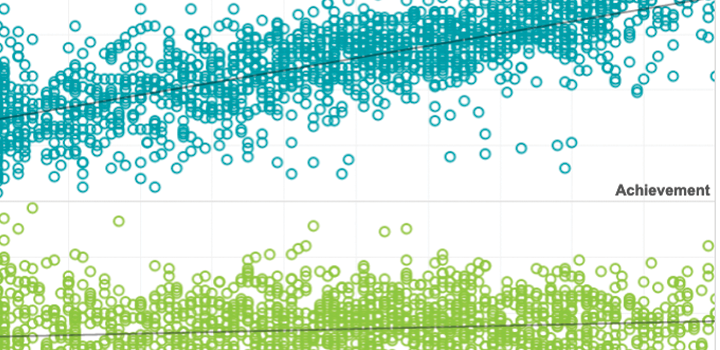

Content Proximity Spring 2022 Pilot Study Research Report
The purpose of this research report is to provide detailed information about updates to the MAP Growth item-selection algorithm. This brief includes results from the Content Proximity pilot study, including information on the validity, reliability, and test score comparability of MAP Growth assessments that leverage this new item-selection algorithm.
By: Patrick Meyer, Ann Hu, Xueming (Sylvia) Li
Products: MAP Growth
Topics: Computer adaptive testing, Innovations in reporting & assessment, Test design


Achievement and Growth Norms for Course-Specific MAP Growth Tests
This report documents the procedure used to produce the achievement and growth user norms for a series of the course-specific MAP® Growth™ subject tests, including Algebra 1, Geometry, Algebra 2, Integrated Math I, Integrated Math II, Integrated Math III, and Biology/Life Science. Among these tests, Integrated Math I, Integrated Math II, Integrated Math III, and Biology/Life Science were the first time to have their norms available. The remaining tests, i.e., Algebra 1, Geometry, and Algebra 2, had their norms updated including receiving more between-term growth norms by using more recent test events. Procedure for norm sample selection and a model-based approach using the multivariate true score model (Thum & He, 2019) that factors out known imprecision of scores to generate the norms are also provided in detail, along with the snapshots of the achievement and growth norms for each test.
By: Wei He
Products: MAP Growth
Topics: Measurement & scaling


The purpose of this technical appendix is to share more detailed results and describe the sample and methods used in the research in Progress towards pandemic recovery: Continued signs of rebounding achievement at the start of the 2022-23 school year.
By: Megan Kuhfeld, Karyn Lewis
Topics: COVID-19 & schools, Equity


New research provides evidence that student reading and math achievement at the start of the 2022–23 school year is continuing to rebound from the impacts of the pandemic, though full recovery is likely still several years away.
By: Karyn Lewis, Megan Kuhfeld
Topics: Equity, COVID-19 & schools


Technical appendix for: The widening achievement divide during COVID-19
The purpose of this technical appendix is to share more detailed results and to describe more fully the sample and methods used in the research included in the brief, The widening achievement divide during COVID-19.
By: Megan Kuhfeld, Meredith Langi, Karyn Lewis
Topics: COVID-19 & schools, Equity


The widening achievement divide during COVID-19
New research provides additional evidence of the uneven impacts of the COVID-19 pandemic showing that students’ math and reading test scores are more variable in spring 2022 than before the pandemic in part because the divide between high and low achievers has widened.
By: Karyn Lewis, Megan Kuhfeld, Meredith Langi, Scott J. Peters, Erin Fahle
Topics: COVID-19 & schools, Equity


COVID-19 in the early elementary years: A comparison of achievement in spring 2019 and spring 2022
New NWEA research provides further evidence of the challenges that young learners are currently facing from the disruptions of the COVID-19 pandemic.
By: Megan Kuhfeld, Karyn Lewis
Topics: COVID-19 & schools, Early learning, Equity


